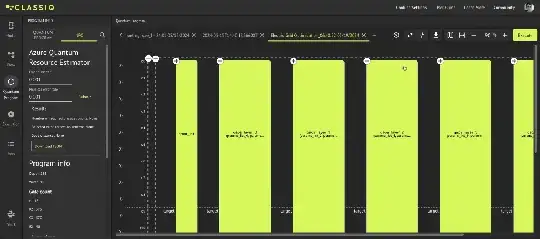You can convert pyomo (an open-source Python library for defining and solving classical optimization problems) problems to Hamiltonian problems using Classiq. Check this user guide to see how to do it. You also have a notebook teaching it here.
In the Git Public repo it is in https://github.com/Classiq/classiq-library/tree/main/applications/optimization
Generally speaking, once you define a Pyomo ConcreteModel (contains objective function and constraints), you can create a qmod based on it using construct_combinatorial_optimization_model which is a shortcut for explicitly writing the entire model. It calculates the Hamiltonian for you, builds a proper ansatz, and defines the QAOA for this problem.
So for example:
import pandas as pd
import pyomo.environ as pyo
from classiq import (
construct_combinatorial_optimization_model,
execute,
show,
synthesize,
)
from classiq.applications.combinatorial_optimization import OptimizerConfig, QAOAConfig
Application object definitions and fields
application_object = pyo.ConcreteModel()
application_object.x = pyo.Var(
[1, 2], # variables names
domain=pyo.NonNegativeIntegers, # variables type
bounds=(0, 3), # variables range
)
application_object.cost = pyo.Objective(
expr=3 * application_object.x[1] + 2 * application_object.x[2]
)
application_object.constraint = pyo.Constraint(
expr=3 * application_object.x[1] + application_object.x[2] >= 2
)
application_object.pprint()
going quantum - QAOA preferences
qaoa_config = QAOAConfig(num_layers=1) # QAOA sub-circuit number of repetitions
defining the model
model = construct_combinatorial_optimization_model(
pyo_model=application_level_object,
qaoa_config=qaoa_config,
)
synthesizing a quantum circuit
qprog = synthesize(model)
executing the circuit to solve the optimzation problem:
res = execute(qprog).result()
post-processing the results:
from classiq.applications.combinatorial_optimization import (
get_optimization_solution_from_pyo,
)
solution = get_optimization_solution_from_pyo(
application_level_object,
vqe_result=res[0].value,
penalty_energy=qaoa_config.penalty_energy,
)
optimization_result = pd.DataFrame.from_records(solution)
optimization_result.sort_values(by="cost", ascending=True).head(5)
idx = optimization_result.cost.idxmin()
print(
"x =", optimization_result.solution[idx], ", cost =", optimization_result.cost[idx]
)
view and analyze the quantum circuit:
show(qprog)
Will give this circuit in platform.classiq.io:

And this solution
x = [1, 0] , cost = 2.9999999999999964
If you need the qiskit circuit object of, use this command to get the QASM:
QuantumProgram.parse_raw(qprog).transpiled_circuit.qasm
And convert it with the answer here
In the code I attached, you can also see the execution, and you can choose from the list of backends (all that are in IBM, Azure, AWS, NVIDIA GPU Simulator cloud)
Disclaimer - I am an engineer at Classiq
